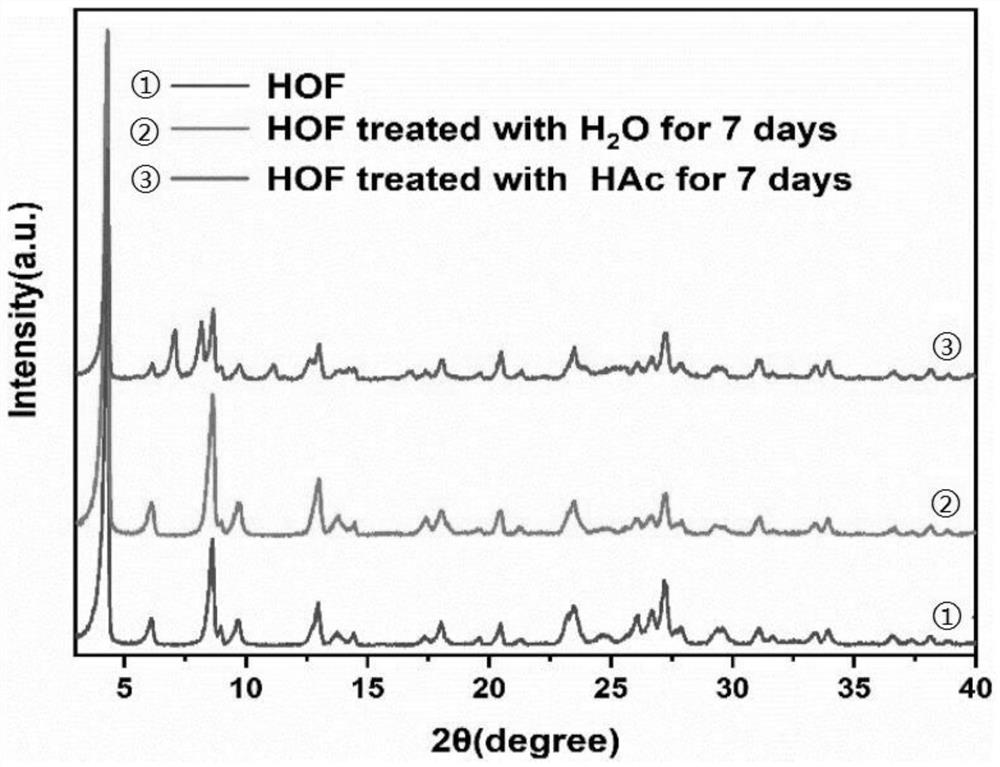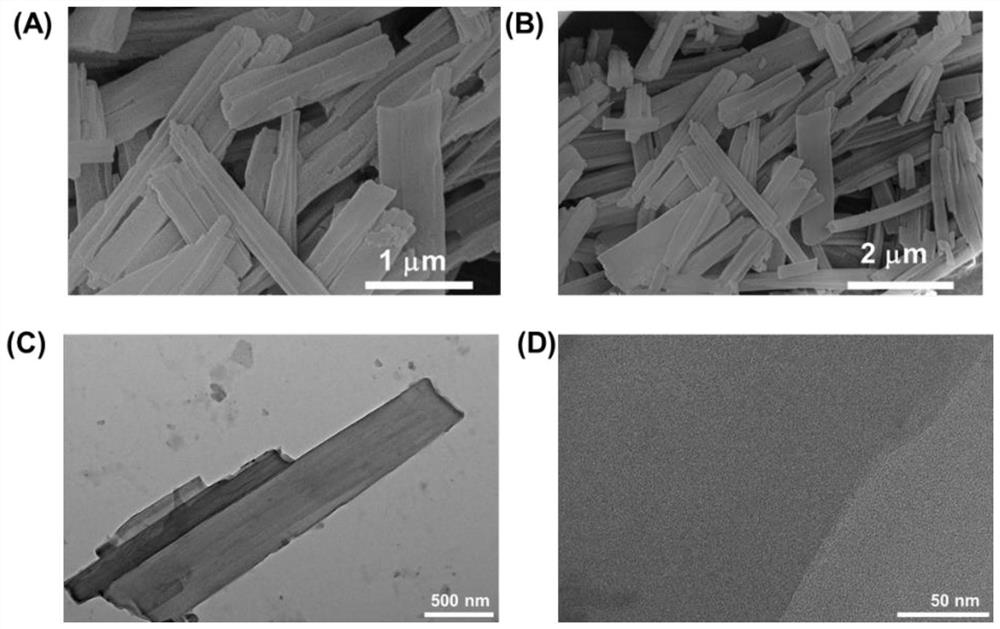Alpha-bungarus multicinctus toxin detection probe and method for non-diagnostic purpose detection of alpha-bungarus multicinctus toxin
A technology of bungalotoxin and detection probe, which is applied in the field of biosensing and can solve the problems of easy aggregation and limited application of nanozymes
- Summary
- Abstract
- Description
- Claims
- Application Information
AI Technical Summary
Problems solved by technology
Method used
Image
Examples
preparation example Construction
[0041] The present invention has no special requirements on the source of the hydrogen-bonded organic framework material, and uses a hydrogen-bonded organic framework material whose organic ligand is 1,3,6,8-tetrakis(4-carboxyphenyl)pyrene, which is commercially available conventionally in the field. Or make your own. When preparing the hydrogen-bonded organic framework material by itself, the preparation method preferably includes:
[0042] In an alkaline environment, mix 4-methoxycarbonylphenylboronic acid, 1,3,6,8-tetrabromopyrene and a catalyst for a coupling reaction to obtain 1,3,6,8-tetrakis(4-(methyl Oxycarbonyl)phenyl)pyrene;
[0043] In an alkaline environment, the 1,3,6,8-tetrakis(4-(methoxycarbonyl)phenyl)pyrene is hydrolyzed and acidified to obtain 1,3,6,8-tetrakis(4-carboxybenzene) Pyrene;
[0044] The 1,3,6,8-tetrakis(4-carboxyphenyl)pyrene undergoes a self-assembly reaction to obtain a hydrogen-bonded organic framework material (HOF).
[0045] The present inv...
Embodiment 1
[0110] (1) Preparation of α-bungarotoxin detection probe
[0111] (1) First, 5g of 4-methoxycarbonylphenylboronic acid, 2.85g of 1,3,6,8-tetrabromopyrene, 0.1g of tetrakis(triphenylphosphine)palladium and 6g of potassium carbonate were dissolved in 100mL of dioxane, in N 2 Stir at 85°C for 72h under protection. Then the reaction product was poured into a solution of ice water and concentrated hydrochloric acid (v / v=3:1), the organic phase was collected by extraction with chloroform, finally dried with magnesium sulfate and dried in vacuo to remove the organic solvent, and finally obtained the product 1,3 ,6,8-Tetrakis(4-(methoxycarbonyl)phenyl)pyrene;
[0112] (2) First, dissolve 1,3,6,8-tetrakis(4-(methoxycarbonyl)phenyl)pyrene in a mixed solution of 100mL tetrahydrofuran / dioxane / water (v / v=5:2:2) 1 g KOH was then added, and the mixture was refluxed and stirred at 85° C. for 12 h, and the organic solvent was removed by vacuum drying. Then add 100mL H 2 O was stirred at r...
Embodiment 2
[0130] (1) Preparation of α-bungarotoxin detection probe
[0131] (1) First, 5g of 4-methoxycarbonylphenylboronic acid, 2.85g of 1,3,6,8-tetrabromopyrene, 0.1g of tetrakis(triphenylphosphine)palladium and 6g of potassium carbonate were dissolved in 100mL of dioxane, in N 2 Stir at 85°C for 72h under protection. Then the reaction product was poured into a solution of ice water and concentrated hydrochloric acid (v / v=3:1), the organic phase was collected by extraction with chloroform, finally dried with magnesium sulfate and dried in vacuo to remove the organic solvent, and finally obtained the product 1,3 ,6,8-Tetrakis(4-(methoxycarbonyl)phenyl)pyrene;
[0132] (2) First, dissolve 1,3,6,8-tetrakis(4-(methoxycarbonyl)phenyl)pyrene in a mixed solution of 100mL tetrahydrofuran / dioxane / water (v / v=5:2:2) 1 g KOH was then added, and the mixture was refluxed and stirred at 85° C. for 12 h, and the organic solvent was removed by vacuum drying. Then add 100mL H 2 O was stirred at r...
PUM
| Property | Measurement | Unit |
|---|---|---|
| Concentration | aaaaa | aaaaa |
| Linear | aaaaa | aaaaa |
Abstract
Description
Claims
Application Information
 Login to View More
Login to View More - R&D
- Intellectual Property
- Life Sciences
- Materials
- Tech Scout
- Unparalleled Data Quality
- Higher Quality Content
- 60% Fewer Hallucinations
Browse by: Latest US Patents, China's latest patents, Technical Efficacy Thesaurus, Application Domain, Technology Topic, Popular Technical Reports.
© 2025 PatSnap. All rights reserved.Legal|Privacy policy|Modern Slavery Act Transparency Statement|Sitemap|About US| Contact US: help@patsnap.com



